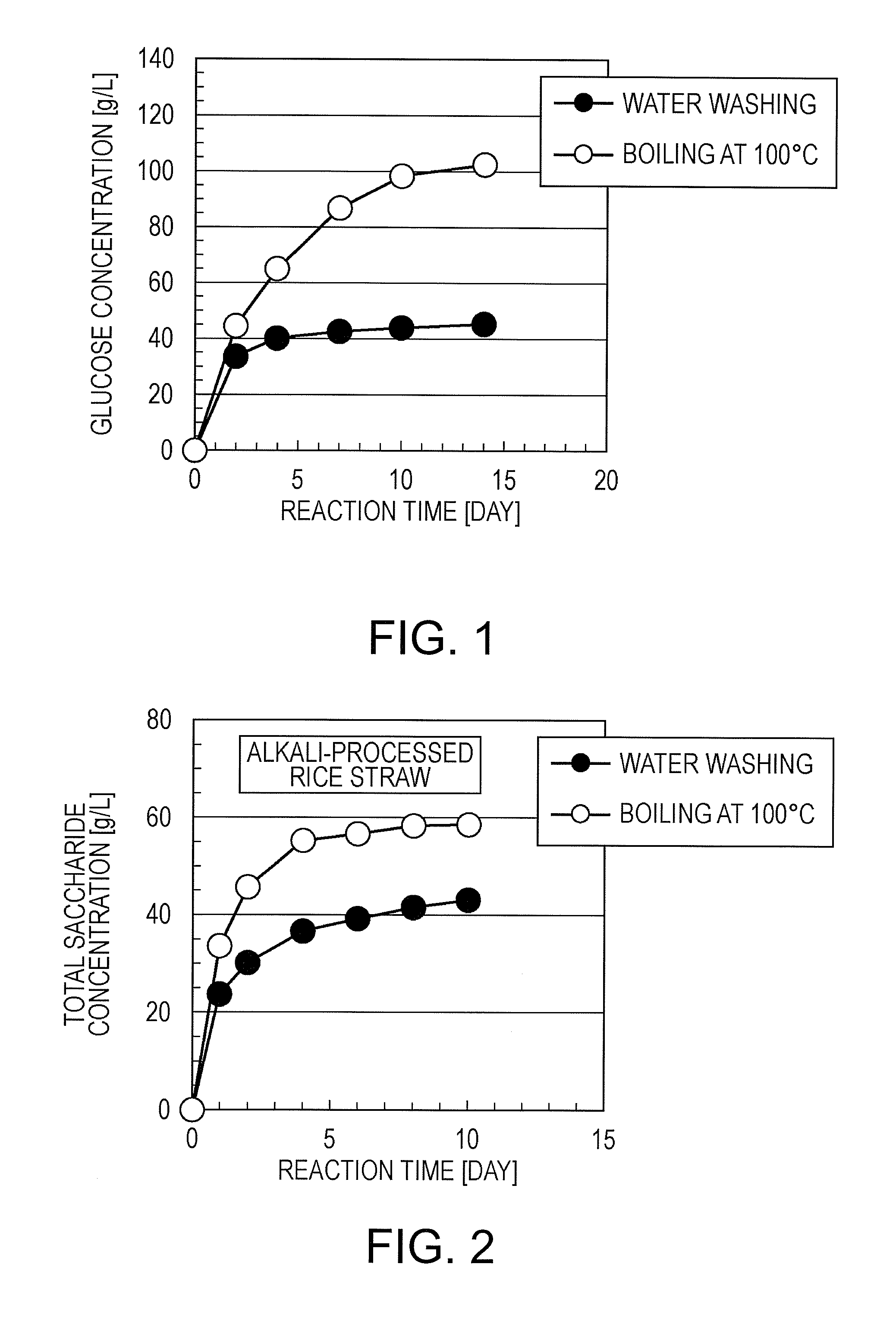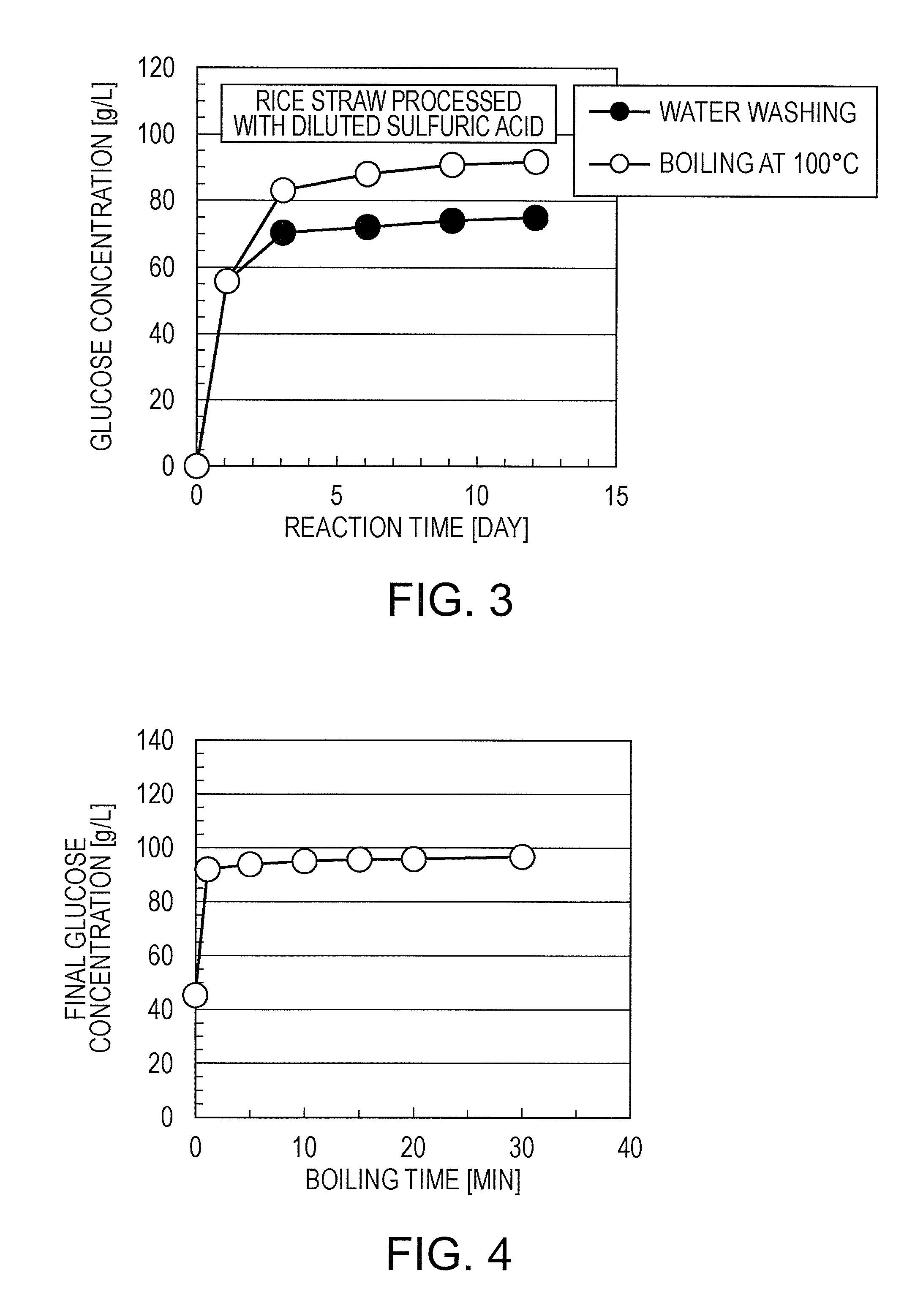Method for pretreating biomass, and method for producing sugar containing glucose as main component
- Summary
- Abstract
- Description
- Claims
- Application Information
AI Technical Summary
Benefits of technology
Problems solved by technology
Method used
Image
Examples
example 1
[0052]Eucalyptus was hydrothermally exploded and the steam-exploded eucalyptus was boiled in hot water of 100° C. for 5 minutes.
[0053]Then the eucalyptus was degraded with cellulase under the following conditions:
[0054]Weight of eucalyptus: 10 g / dry
[0055]Amount of cellulase added: 20 mg / protein
[0056]Amount of solution: 50 mL
[0057]Temperature: 50° C.
[0058]pH: 5
[0059]The relationship between the enzymatic degradation reaction time (min) and the concentration of glucose obtained (g / L) was investigated. The results are indicated in FIG. 1.
example 2
[0064]Rice straw was pretreated with an aqueous sodium hydroxide solution and boiled in 100° C. hot water for 5 minutes.
[0065]Then the rice straw was degraded with cellulase under the following conditions:
[0066]Weight of rice straw: 10 g / dry
[0067]Amount of cellulase added: 20 mg / protein
[0068]Amount of solution: 50 mL
[0069]Temperature: 50° C.
[0070]pH: 5
[0071]The relationship between the enzymatic degradation reaction time (min) and the concentration of glucose obtained (g / L) was investigated. The results are indicated in FIG. 2.
example 3
[0076]Rice straw was pretreated with a diluted aqueous sulfuric acid solution and boiled in 100° C. hot water for 5 minutes.
[0077]Then the rice straw was degraded with cellulase under the following conditions:
[0078]Weight of rice straw: 10 g / dry
[0079]Amount of cellulase added: 20 mg / protein
[0080]Amount of solution: 50 mL
[0081]Temperature: 50° C.
[0082]pH: 5
[0083]The relationship between the enzymatic degradation reaction time (min) and the concentration of glucose obtained (g / L) was investigated. The results are indicated in FIG. 3.
PUM
| Property | Measurement | Unit |
|---|---|---|
| Temperature | aaaaa | aaaaa |
| Temperature | aaaaa | aaaaa |
| Boiling point | aaaaa | aaaaa |
Abstract
Description
Claims
Application Information
 Login to View More
Login to View More - R&D
- Intellectual Property
- Life Sciences
- Materials
- Tech Scout
- Unparalleled Data Quality
- Higher Quality Content
- 60% Fewer Hallucinations
Browse by: Latest US Patents, China's latest patents, Technical Efficacy Thesaurus, Application Domain, Technology Topic, Popular Technical Reports.
© 2025 PatSnap. All rights reserved.Legal|Privacy policy|Modern Slavery Act Transparency Statement|Sitemap|About US| Contact US: help@patsnap.com


